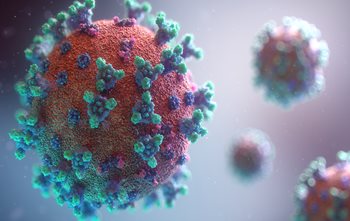
COVID-19: A Healthcare Pandemic for Post Acute Care
Disclaimer: COVID-19 is a new disease and research on its treatment is constantly changing (updating). For the most current information on COVID-19, please check with reliable sources, many of which are listed on the reference page, for the latest up to date treatment guidelines.
Questions? Check out our FAQs page and How Online IV Certification Works!
Objectives
Upon completion of this course participants will be able to:
- Discuss what is meant by the term coronavirus and the acronym COVID-19.
- Identify signs and symptoms pertaining to the clinical presentation of a suspected coronavirus patient (COVID-19), including overviews of Adult Respiratory Distress Syndrome (ARDS) and Pediatric Kawasaki Disease (KD).
- Outline infection control issues related to care of the coronavirus patient (COVID-19).
- Discuss the likely origin of coronavirus in Wuhan, China.
- Cite proper hand washing guidelines and use of Personal Protective Equipment (PPE).
- Describe ongoing research and development of treatments (medications, vaccines, and plasma therapy) for confirmed coronavirus (COVID-19), including update on remdesivir clinical trials.
- Discuss the differences between the terms outbreak, epidemic, and pandemic.
- Discuss the term “vulnerable population” as a high-risk group for developing coronavirus (COVID-19).
- State the differences between the terms contagious and infectious.
- Describe caregiver burnout versus moral injury; discuss treatment options.
- Review CMS guidelines for facility surveys during healthcare pandemic.
Curriculum
Chapter 1: Introduction, and Learning Objectives
Chapter 2: Origin and Pathophysiology of COVID-19
Chapter 3: COVID-19 and Vulnerable Populations
Chapter 4: COVID-19 and Emerging Treatment Options
Chapter 5: Nursing Homes: Preparing to Deal with a Pandemic
Chapter 6: Legalities
- Legal immunity
- Legal implications
- The Emergency or Disaster Treatment Protection Act (EDTPA)
- CMS survey guidelines
Chapter 7: When the Caregiver Becomes the Patient
Chapter 8: Caring for the Caregiver
- The importance of self-care amidst a pandemic
- Introduction to moral injury
Chapter 9: References
Chapter 10: Appendix
- California Bill 241
- Implicit Bias in Healthcare
- What is Implicit Bias?
- Implications of Implicit Bias in Healthcare
- How to Reduce Implicit Bias
Price: $24.00
Contact Hours: 2

Course Author

Maureen Sullivan-Tevault
Maureen graduated nursing school in 1981 and has spent her years in the Emergency and Trauma field, including nursing positions as the Emergency Department Manager, Director of Staff Education, Trauma Coordinator, Cardiology Nurse Navigator, and Stroke Program Manager.
Read Full BioCourse Accreditation
See our Accreditation Statements page to view our accreditation information.